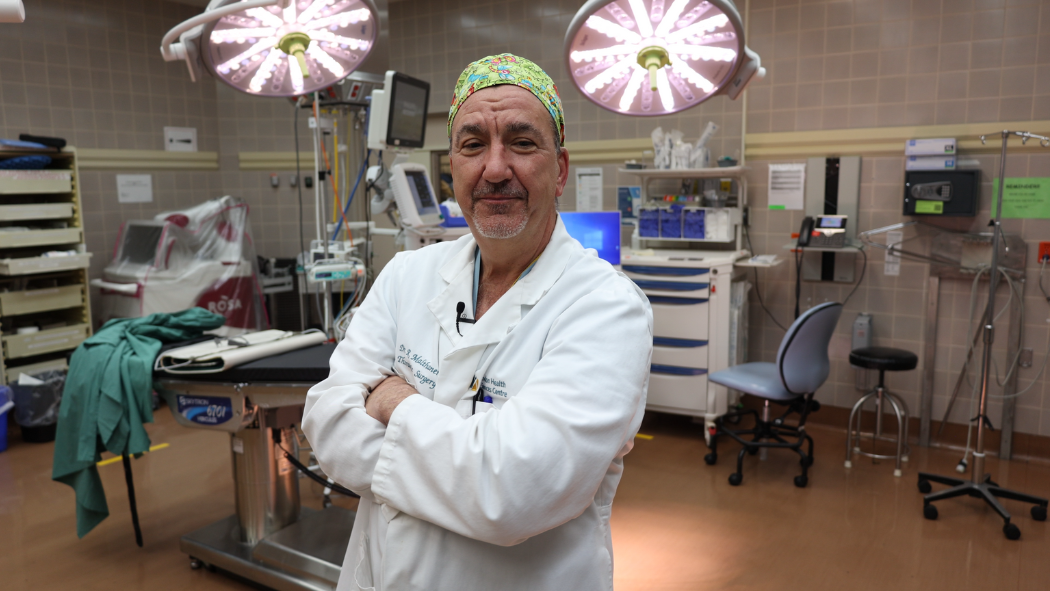
May 31, 2023
World No Tobacco Day is May 31 and we sat down with Dr. Richard Malthaner, Chair of Thoracic Surgery at London Health Sciences Centre (LHSC), to talk about tobacco’s effects on the body and the benefits of giving it up.
Note: Tobacco is used as a traditional form of medicine by Indigenous peoples. LHSC honours their ways of being, knowing and healing (mentally, emotionally, spiritually and physically). For Indigenous-tailored tobacco cessation resources, visit tobaccowise.com.
What is tobacco?
Tobacco is a plant that contains nicotine, a highly addictive substance that has both stimulating and tranquilizing effects. The plant is dried, fermented and then turned into nicotine-delivering products, such as cigarettes, for consumption. It’s one of the world’s leading preventable causes of death and is harmful to the body regardless of whether its smoked, chewed or sniffed.
How did it become so popular?
Tobacco has been used in cultural and religious ceremonies for centuries but became widespread during the First and Second World War. Manufacturers figured out cigarettes were cheap to mass produce, and despite knowing their dangers, ran advertisements framing smoking as a trendy, nerve-calming activity that cool people do. While there are laws today requiring cigarette manufacturers disclose the health hazards associated with tobacco use on their packaging, there was nothing preventing them from concealing the truth at the time. Unfortunately, this resulted in millions of people being tricked into addiction.
How is it harmful?
Tobacco is harmful in many ways. In fact, we know it negatively affects nearly every organ in the human body. It causes at least 12 different types of cancer, heart disease, lung disease, gum disease, stroke and diabetes. It also impairs the functioning of your immune system and can lead to early cognitive decline. Some people believe these outcomes are only true for those who use tobacco heavily, but it’s important to emphasize that even people who use tobacco lightly are at an increased risk. The good news, however, is that quitting can reverse some of this harm.
What are the benefits of quitting?
There are numerous benefits of quitting, regardless of how often you use tobacco or how long you’ve been using it for. Some of these benefits also kick in quite quickly. For example, your heart rate and blood pressure will begin to return to normal after only 20 minutes, and it just gets better from there. Fast forward five to 10 years and your chance of developing some cancers drops by half and then continues to drop further over time until about 20 years later when your chance is close to that of someone who doesn't use tobacco at all.
Is it too late to quit if you already have cancer?
It’s never too late to quit, cancer or not. Quitting at the time of your diagnosis actually makes surgical complications less likely, helps your chemotherapy and radiation therapy work better, and reduces the chance that the same or another cancer will return afterwards. Overall, your risk of death can be reduced by up to 40 per cent, which is quite significant.
How should someone thinking of quitting get started?
If you’re ready to quit, speak with your doctor. It may be difficult, but there are supports available. You're not alone.
Tips for quitting tobacco
- Stay motivated by reminding yourself why you quit in the first place.
- Try nicotine replacement therapies, like patches, gum and lozenges, to help manage your cravings.
- Avoid what triggers you. Your cravings will likely be the strongest in places or situations you’ve used tobacco in before, or in places where others are using it around you.
- If you feel like giving in, tell yourself to wait 10 more minutes and then distract yourself. You might find the craving dissipates before time is up. (And remember, there’s no such thing as just one!)
- If you’re used to having a cigarette in your hand, opt for something else you can hold, like a glass of water. Or, if you’re used to chewing tobacco, try gum.
- Move your body. Physical activity, even in short bursts, can be good at suppressing cravings.
- Try relaxation techniques, such as deep breathing or yoga, to take the edge off. If tobacco was how you coped with stress before, it’s important to replace that old habit with a healthier one.